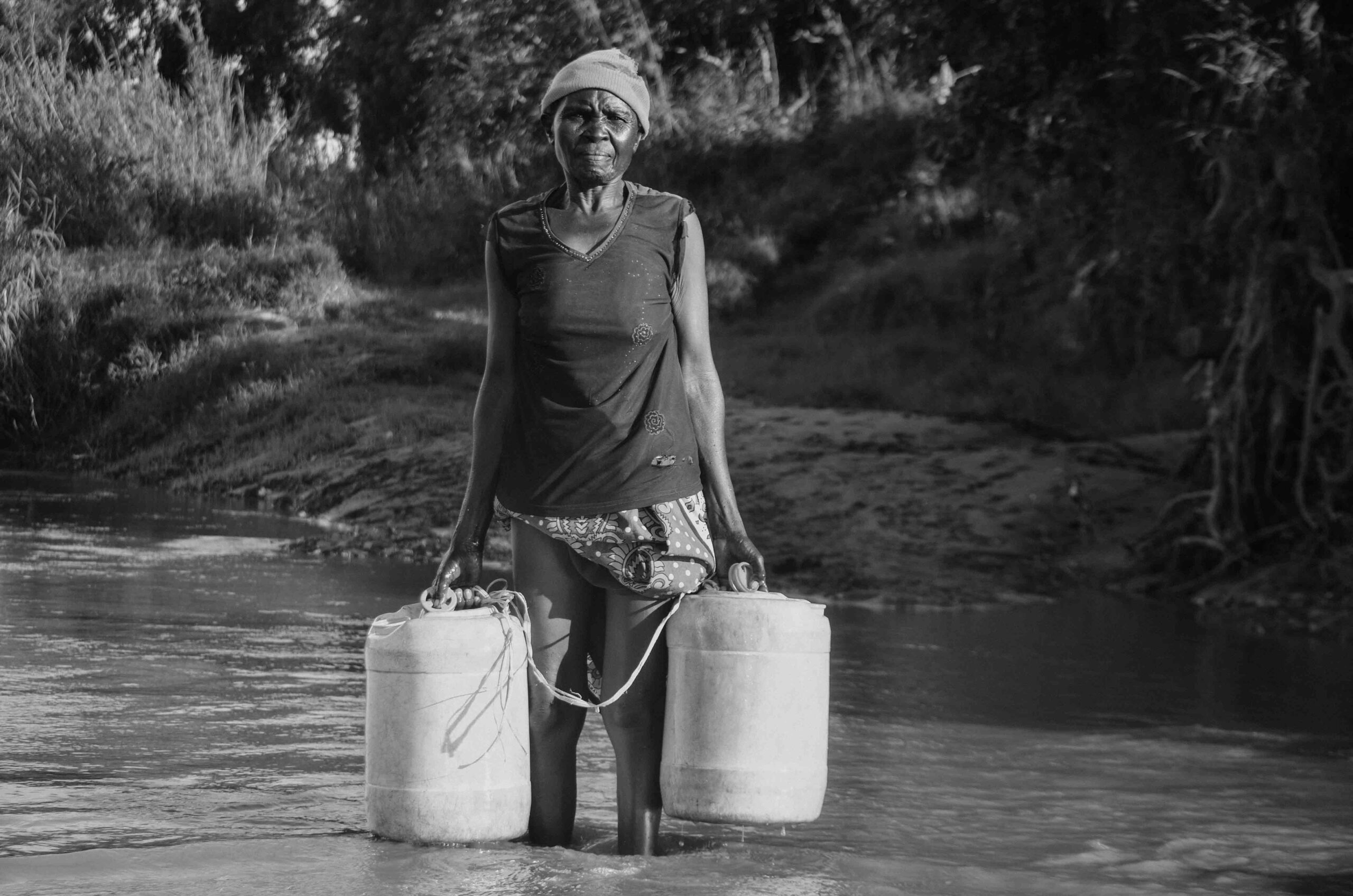
It’s a bright morning by the riverside. Golden sunlight filters through, illuminating River Kuja’s flowing waters in western Kenya while early birds chirp along its banks. A gentle hum of village life begins to stir as smoke rises from cooking fires and the sounds of greetings float through the air. The community is waking up, and each member plays a part in life along the banks of River Kuja.

A young woman does her domestic chores along the shores of River Kuja. Photo: The Niles / Curity Ogada
As the sun climbs higher, its warmth spreads over the lush greenery of the riverbanks, bringing wildlife and villagers to life. Among them is Mary Akinyi Obunga, a 68-year-old water seller from Wath Ong’er. Known for her cheerful disposition, Mary brightens everyone’s day with her talkative nature and presence.
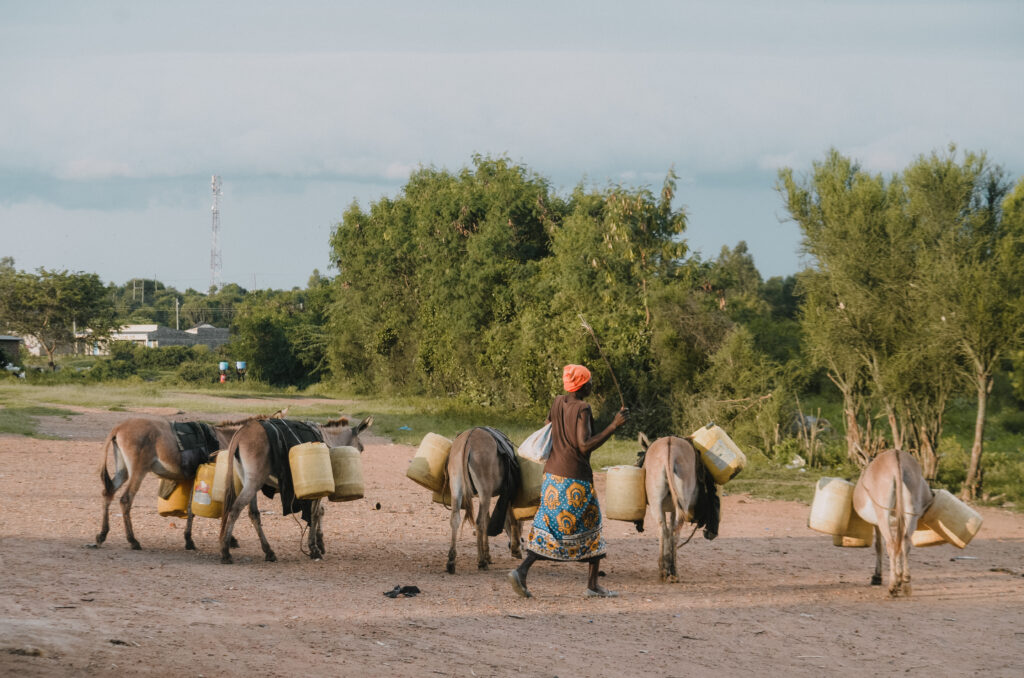
Mary Akinyi, 68 years old, is on her way to River Kuja to fetch water for sale to hotels and homes in Wath Ong’er. Photo: The Niles / Curity Ogada
Mondays are especially busy in Wath Ong’er as townsfolk prepare for Tuesday’s market day, a significant weekly event. Traders from Kenya, Tanzania, and Uganda converge here to buy and sell livestock, woven goods, food products, and more. For over two decades, Mary Akinyi and her friend Mary Achieng Nyakore have supplied water to this market, transporting it from the river using donkeys.
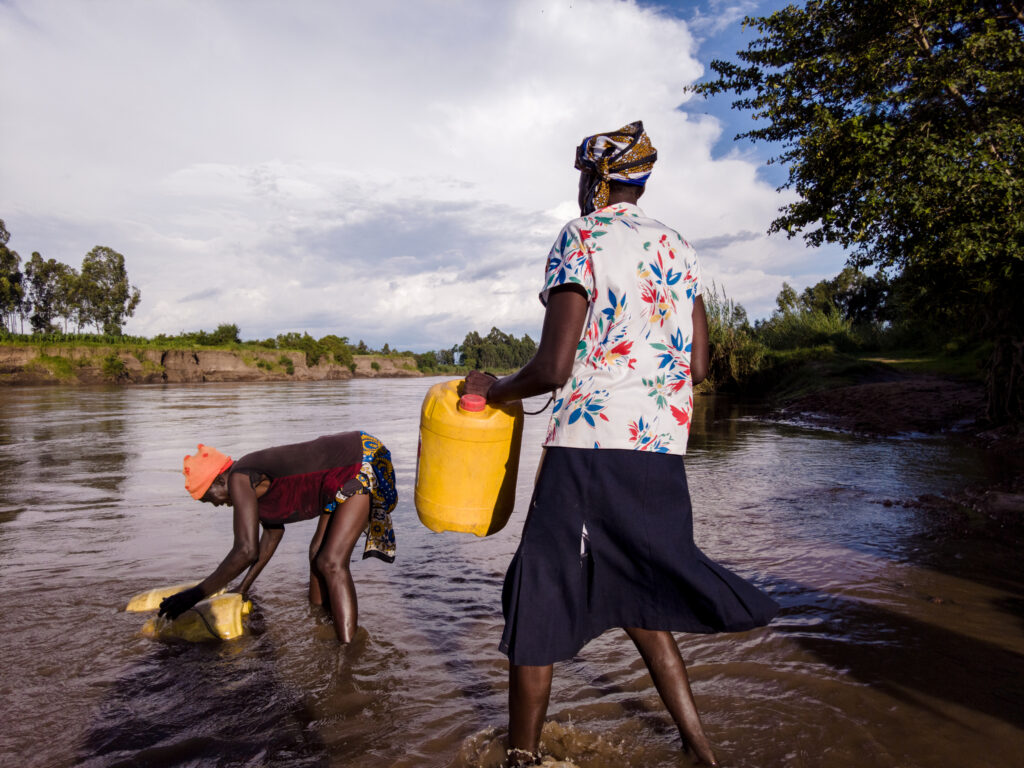
Mary Akinyi and Mary Achieng Nyakore, both primary water sellers in Wath Ong’er, transport water from the River Kuja on their donkeys. Photo: The Niles / Curity Ogada
River Kuja flows through multiple communities before reaching Wath Ong’er. It originates in the highlands of Kiabonyoru in Nyamira County and is known among the Kisii as River Gucha. As it reaches Migori County, the Luo call it River Kuja and its final destination is Lake Victoria.
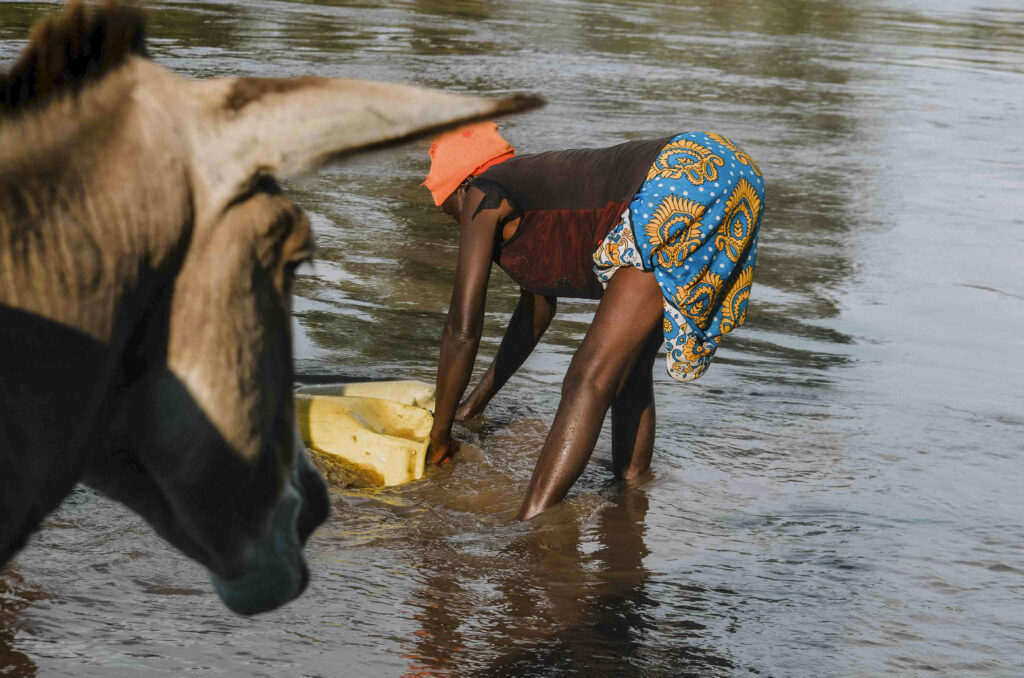
Mary Akinyi, fetching water from the shallower ends of River Kuja. Photo: The Niles / Curity Ogada
According to local stories, the name Kuja reflects both the good and bad things brought by the river; in Swahili, “Kuja” means “come.” The river converges with the Migori River and flows vigorously into Lake Victoria.
Wath Ong’er, located in Nyatike Sub-County within Migori, is at the heart of Kenya’s southwestern region. The journey from Migori town to Wath Ong’er spans 40 kilometres over relatively good terrain, though dust covers some roads leading into the market centre.
Mary Akinyi Obunga has followed the same path for twenty years, transporting water from River Kuja to the market centre. “This water business has educated my children, fed my family, built me a home, and now pays for my grandchildren’s education,” she says with pride. She calls her work “willing buyer, willing seller,” charging KSH 10 (USD 0.07) per jerrican. On each trip, Mary’s five donkeys carry four jerricans each, amounting to 320 litres.
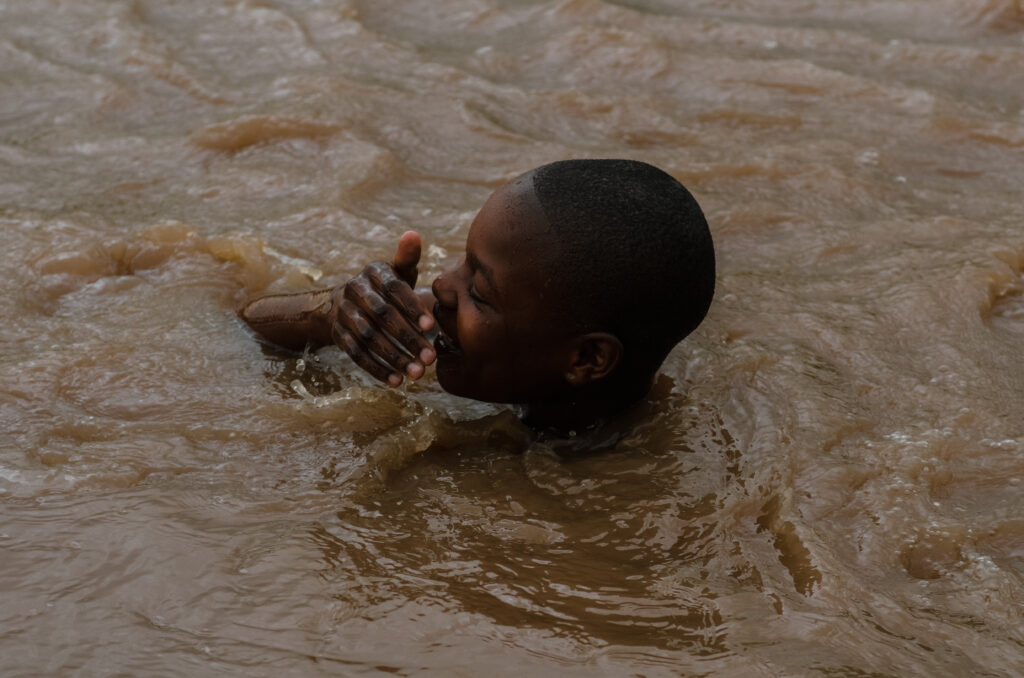
“This river is the only water source for the community. We bathe, wash, drink, and even fight by its banks,” says Mary. Photo: The Niles / Curity Ogada
Despite her age, Mary is physically fit, energetic, and well-respected by her community. Her customers say she’s like a thread weaving through Wath Ong’er, always knowing what’s happening and where. Mondays are particularly hectic, and her son, Joseph Aloo, who lives with a disability, often helps meet the demand.
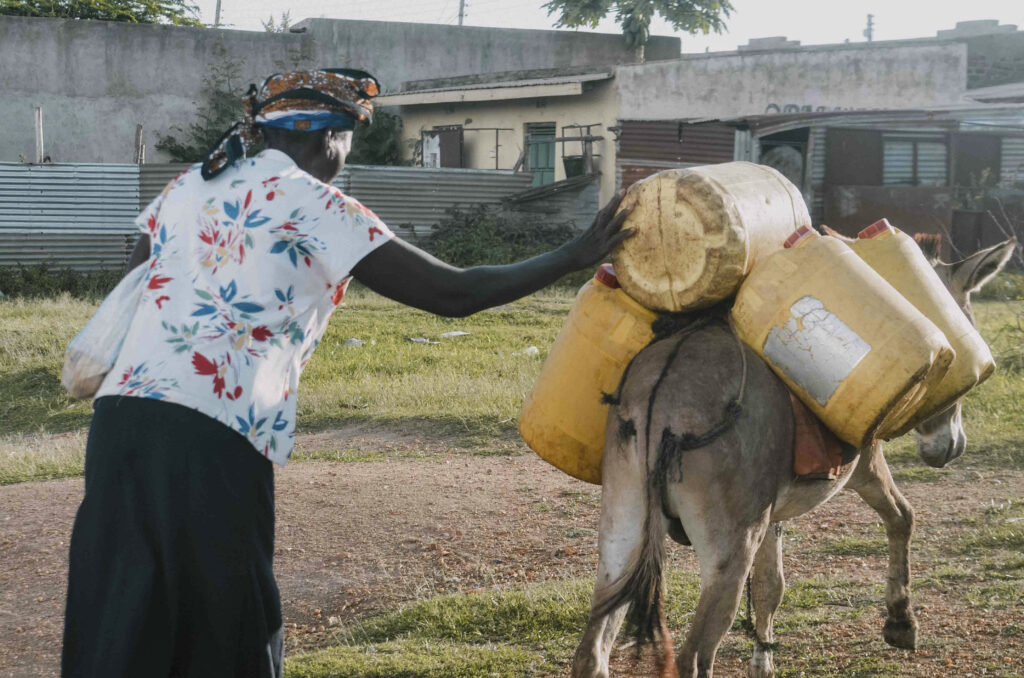
Mary’s friend, Mary Achieng Nyakore, delivers water to a family near the market. Photo: The Niles / Curity Ogada
Pamela Akinyi Mirima, a 37-year-old widow with four children, owns a small hotel near the river. Market days bring her a steady flow of customers, and she relies on Mary’s water deliveries to keep her business running. “Mary has been supplying me with water for 20 years; she’s like a mother to me,” says Pamela.
Mary is well aware of the risks associated with untreated river water. She uses purifiers at home and urges others to do the same, though many in the community continue to use the water directly from the river despite the risks.
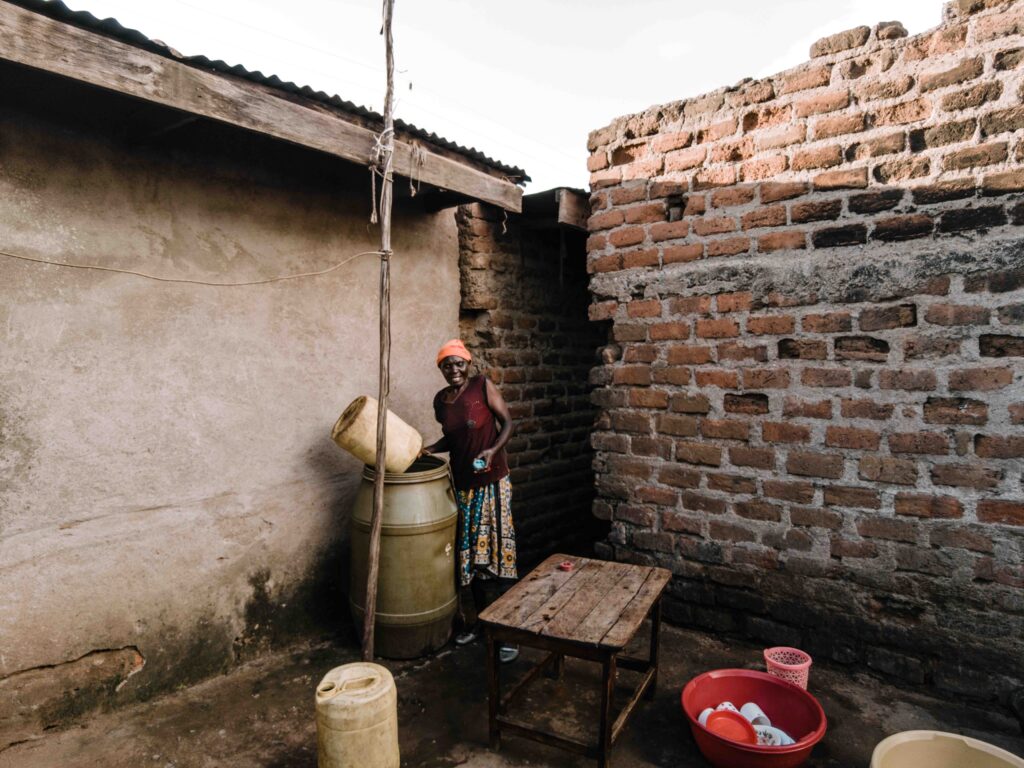
Mary Akinyi pours water into a customer’s storage tank. Photo: The Niles / Curity Ogada
In response to waterborne illnesses, CARE Kenya distributes water purifying sachets weekly through the Wath Ong’er Dispensary, helping households reduce contamination.
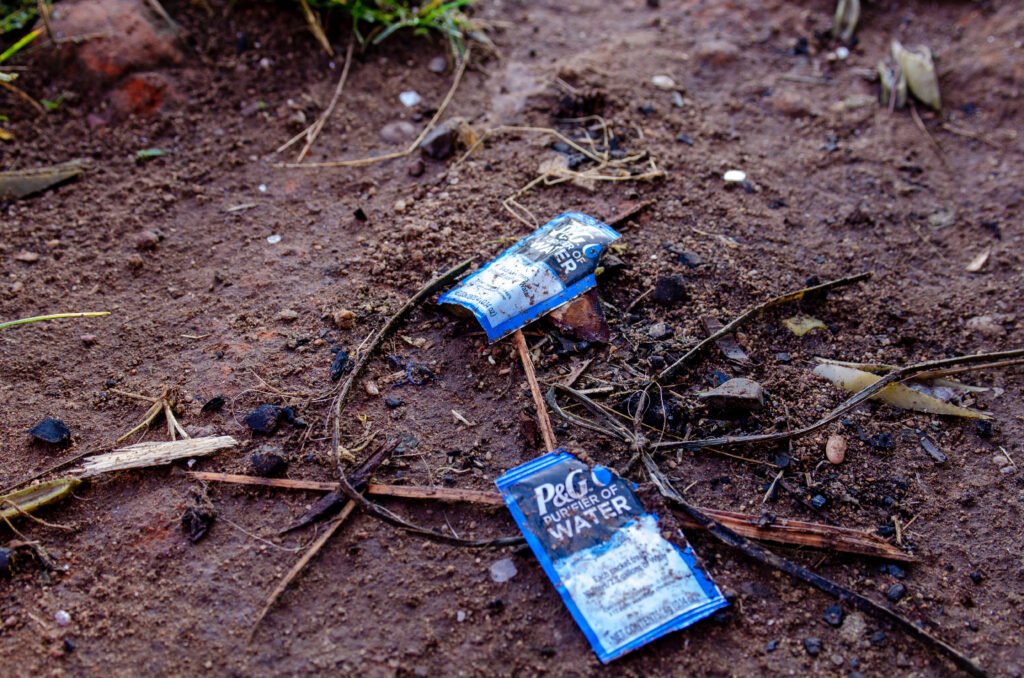
Purifying sachets, distributed weekly, are a common sight in Wath Ong’er. Photo: The Niles / Curity Ogada
A resident, Joseph Onyango Ayaki, highlights the dangers of mining waste contaminating the river. “We have zero clean water. Diseases grow and worsen over time,” he says.
The Maji Safi (Clean Water) Kiosk initiative was introduced with rising health concerns. Using a sky hydrant filter, the kiosk purifies and sells river water cheaply. Joyce Onyach, 53, a local advocate, helped establish the kiosk through partnerships with Siemens Foundation and CARE.

Mary Akinyi at the Maji Safi Kiosk. Photo: The Niles / Curity Ogada
“I wanted to provide clean water to my community,” says Joyce. The initiative has reduced cases of waterborne diseases and provided a safer alternative to river water.
The backflow of Lake Victoria has led to frequent flooding, with contaminated waters damaging homes and displacing families. In 1997, El Niño rains altered River Kuja’s course, and climate change has since increased the frequency and impact of such floods.

Backflow from Lake Victoria encroaches on homes near the lake. Photo: The Niles / Curity Ogada
Simon Awidhi from the Water Resources Users Authority warns that gold leaching and pollution from upstream mining worsen the river’s condition. Meanwhile, the Red Cross and local volunteers help relocate families to higher ground during floods.
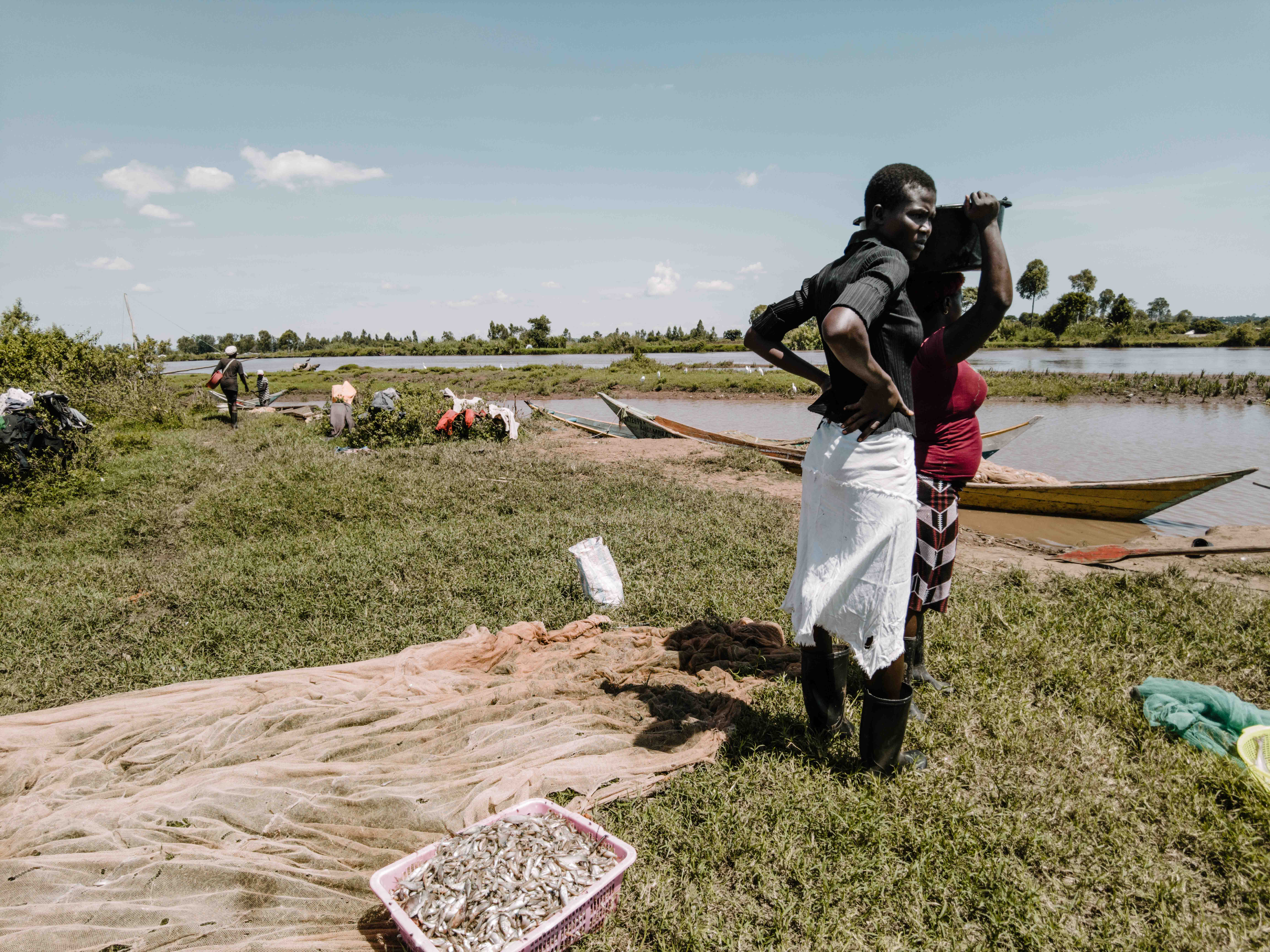
Fish sellers await larger catches as fishermen arrive from Lake Victoria. Photo: The Niles / Curity Ogada
Dr. Jane Macharia, a research scientist, explains that the backflow disrupts fish breeding, threatens biodiversity, and contaminates riparian lands, leading to waterborne disease outbreaks.
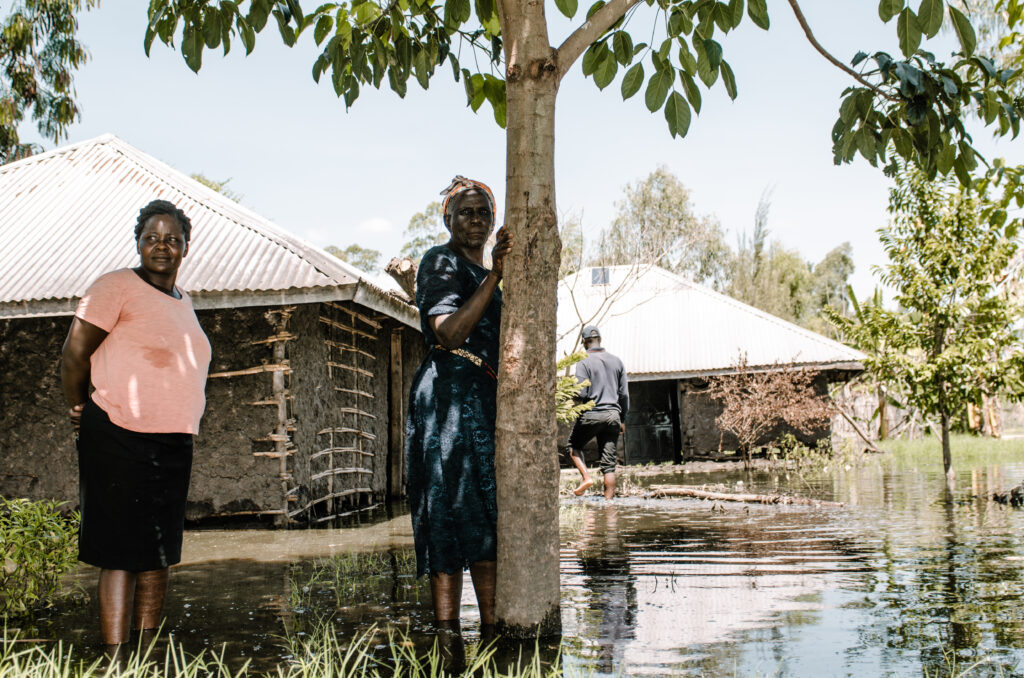
Flooding displaces families, with backflow waters seeping into homes. Photo: The Niles / Curity Ogada
Despite the community’s challenges, River Kuja continues to flow steadily into Lake Victoria, sustaining and endangering those living by it. Residents urge the government to develop solutions to manage backflow and prevent recurring displacement.
Today, Mary Akinyi returns from the market with a greater profit than usual. Her donkeys are laden with empty jerricans after a successful day. She walks home alongside her son, carrying the weight of her community’s resilience and hope.
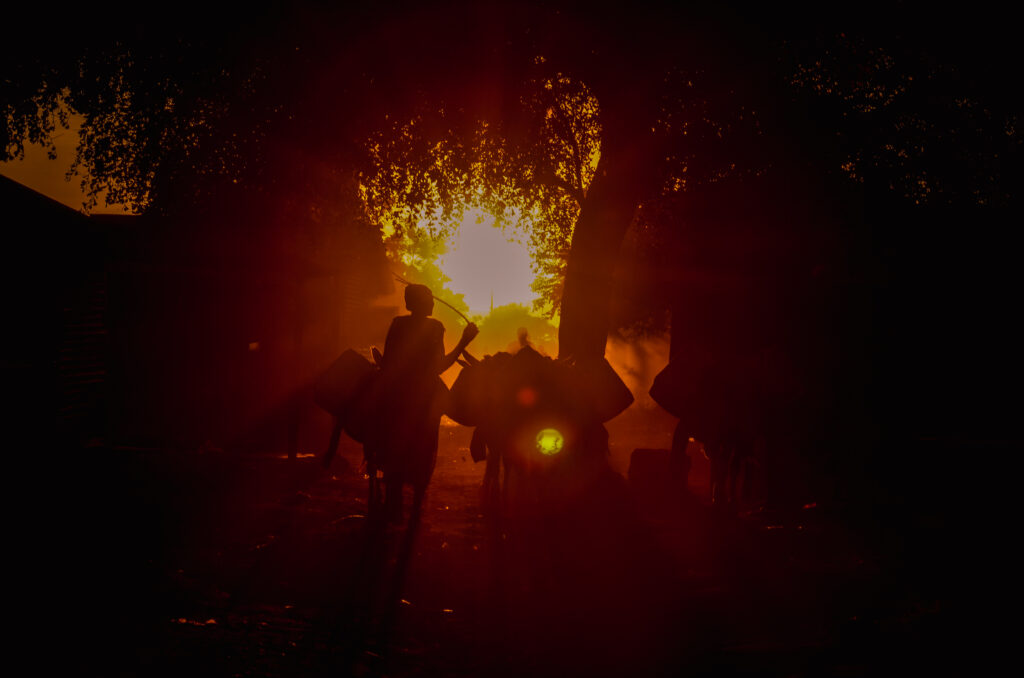
Mary Akinyi and her son head home as the day ends. Photo: The Niles / Curity Ogada